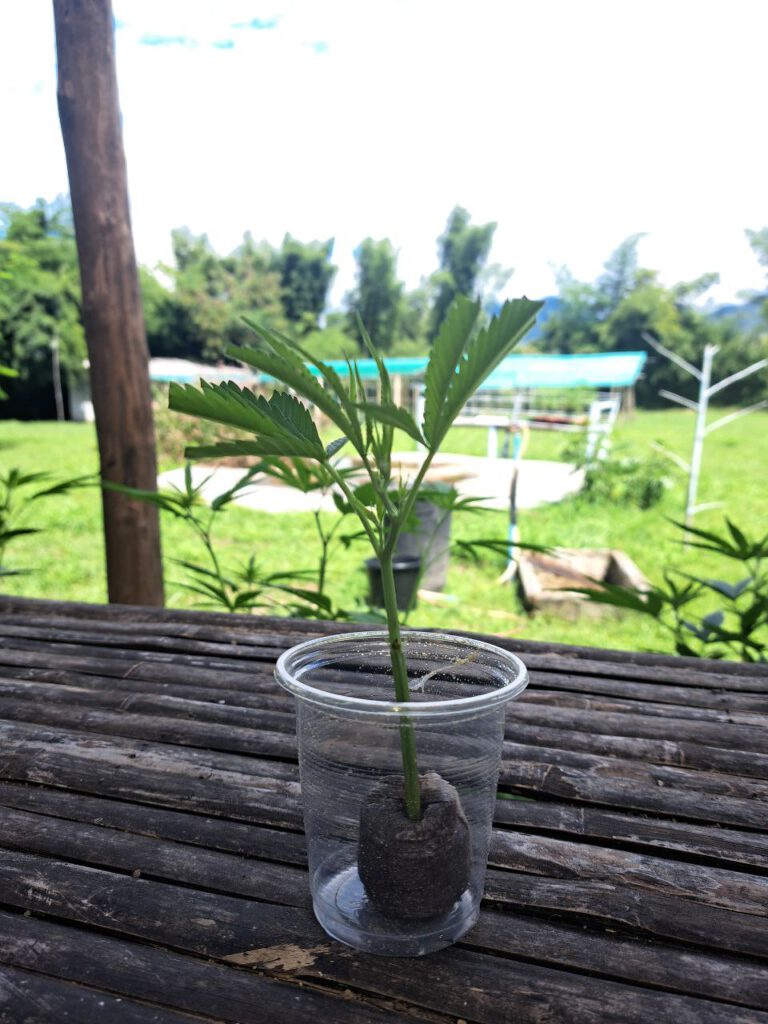Knowledge
Cloning in the Tropics: How to succeed in High Heat and Humidity
Cloning is one of the most valuable tools in a grower’s arsenal. It allows you to preserve genetics, replicate your favorite mother plants, and maintain consistency across harvests. But in the tropics, where high heat and humidity are the rule rather than the exception, cloning takes on a different level of challenge.
At Ritual Genetics, we work in tropical conditions every day. Here’s what we’ve learned about taking cuts, rooting them, and bringing them into strong vegetative growth in climates that test growers to their limits.
Why Cloning in the Tropics Is Different
Cloning cannabis is already a delicate process. The cutting has no roots, is vulnerable to pathogens, and needs just the right balance of moisture and oxygen to survive. In temperate climates, managing this balance is relatively straightforward. In the tropics, two factors complicate things:
- Heat: Temperatures often hover (well) above the ideal cloning range (24–26°C / 75–79°F) depending on the season, causing stress and faster transpiration.
- Humidity: While high humidity is necessary for cuttings, uncontrolled tropical humidity invites mold, rot, and fungal outbreaks.
Instead of fighting the climate, success comes from learning to work with it — giving clones the protection and structure they need while taking advantage of what the tropics naturally offer.
Selecting the Right Cuts
Start with strong, healthy mother plants. In the tropics, mother plants themselves endure more stress from heat, pests, and humidity, so only take cuts from vigorous, pest-free branches.
- Cut size: 10–15 cm with at least 2–3 nodes. Larger cuts transpire too much in high heat.
- Leaf prep: Trim off lower leaves and reduce the size of larger fan leaves by half. This reduces transpiration while still allowing photosynthesis.
- Timing: Take cuts early in the day when the plant is less heat-stressed, or at night.
Mediums That Work in Humid Conditions
In the tropics, the choice of rooting medium can mean the difference between 90% success and a tray of rotting stems.
- Peat/coco plugs: Lightweight, breathable, and forgiving in high humidity.
- Rockwool: Works, but needs strict sanitation — algae and mold thrive if plugs are kept too wet.
- Soil mixes: Avoid. Possible, but riskier due to inconsistent water/air ratio in heavy tropical soils.
Whatever medium you choose, err on the side of aeration. In hot, damp environments, clones suffocate before they dry out.
Dome Discipline
Dome discipline is crucial in the tropics. While domes create the protective bubble clones need in their first days, in the wet season the ambient humidity often already sits above 80%. In these conditions, sealed domes can trap stagnant, saturated air that quickly breeds mold and damping-off fungi. In fact, we find that leaving the domes off entirely during the rainy months can actually produce stronger clones, provided growers manage airflow and keep leaves misted just enough to prevent wilting. The guiding principle is control — use domes as a tool when conditions demand, but don’t assume they’re always necessary.
Temperature Management
Root zone temperature is critical. Above 30°C (86°F), rooting slows and rot accelerates. In many tropical environments, that’s the natural ambient. Solutions include:
- Shaded location: Never place clone trays in direct sun. Bright indirect light is best.
- Water-cooled trays: If possible, use cool water reservoirs or a cooled mist system under trays.
- Night advantage: Nighttime temps are usually cooler; consider taking cuts and setting them under domes in the evening.
Even small temperature drops (2–3°C) can improve rooting percentages significantly.
Disease and Pathogen Prevention
High humidity means high pathogen pressure. Preventing outbreaks is more effective than treating them after the fact.
- Sterilize tools: Always clean blades with alcohol before taking cuts.
- Clean medium: Avoid reusing plugs in tropical conditions.
- Air circulation: Even gentle airflow around domes reduces stagnant air where fungus thrives.
- Natural antifungals: Light foliar sprays of aloe vera, neem, or diluted chamomile tea can help deter damping-off fungi.
Light Requirements in the Tropics
Too much light stresses clones, especially in the heat. In equatorial sun, even shaded areas can be intense.
- Best option: Fluorescent or LED strip lighting indoors at 18/6 schedule.
- Outdoor approach: If you must root outdoors, keep trays in deep shade with dappled light only. Plastic mesh or 50% shade cloth can help.
The aim is gentle, consistent light — strong enough to keep photosynthesis going, but not so intense that clones wilt.
Cloning at Scale in the Tropics
Scaling up requires efficiency. For 50+ clones at a time:
- Dedicated clone room or tent: Control is easier indoors, even in tropical environments.
- Automated misters or foggers: Deliver consistent humidity without over-saturating.
- Logbook tracking: Note cut date, mother strain, and success rates to identify patterns.
Remember that not all strains clone equally. Some tropical sativas root more slowly than modern hybrids. Patience and data collection help dial in strain-specific protocols.
Ritual Genetics Approach
At Ritual Genetics, cloning in high heat and humidity isn’t a theory — it’s the daily grind. We’ve found that tropical-adapted strains often show stronger cloning resilience, rooting through stress where others falter. By tracking survival rates, adjusting humidity curves, and selecting keepers that thrive under tropical conditions, we build resilience into the genetics themselves.
The result: plants that not only root more reliably in challenging climates but also pass that toughness on to the next generation.
Conclusion
Cloning cannabis in the tropics is a balancing act — giving cuttings the humidity they need without inviting disease, keeping root zones cool while the air stays hot, and introducing airflow without drying them out.
With the right practices — sharp cuts, airy media, staged humidity management, and strict sanitation — cloning success rates can be as high in the tropics as anywhere else.
And when those clones represent unique tropical genetics, the effort pays off many times over. Each rooted cutting is not just a copy of a plant, but a step in preserving and evolving the future of cannabis where the tropics meet tradition.

